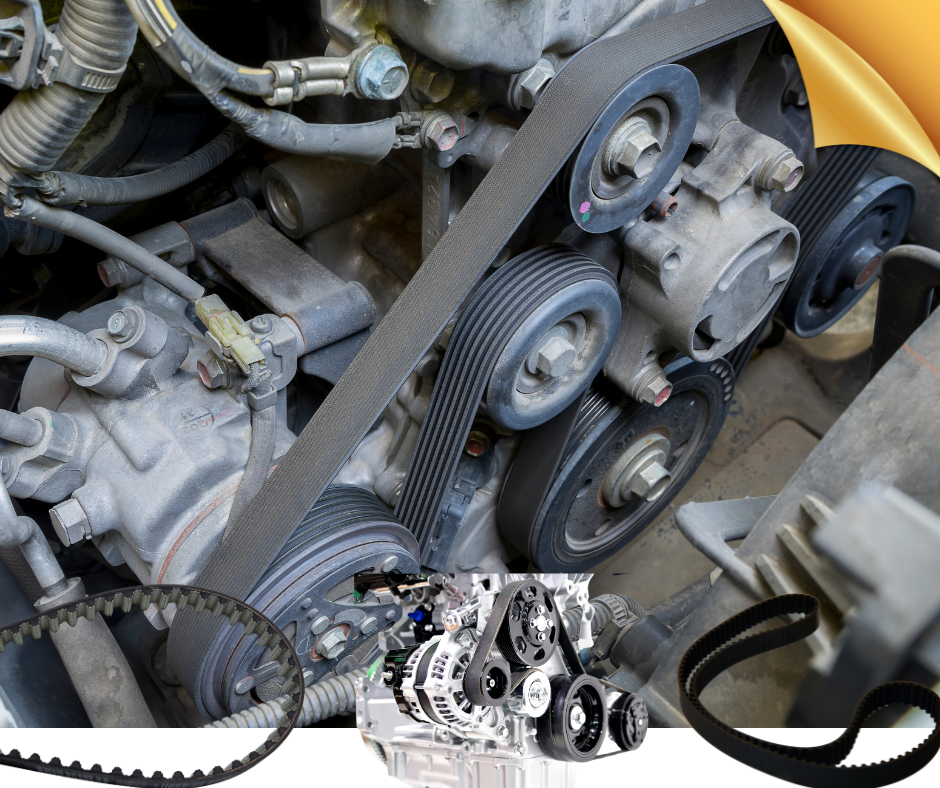Guide How to Tell If Your Drive Belt Needs Replacing

Ensuring your vehicle runs smoothly starts with recognizing the signs of a failing drive belt. Discover the critical indicators before it’s too late.
Identifying Visual Signs of Drive Belt Wear
A visual inspection of your drive belt can reveal a lot about its condition. Look for cracks, fraying, and glazing on the belt's surface. Cracks indicate the belt has dried out and is likely to snap soon. Fraying or shredding along the edges suggests excessive wear and tear, while a shiny or glazed appearance could mean the belt has been slipping.
Additionally, check for any signs of stretching or looseness. A belt that appears too loose can slip off the pulleys, leading to a malfunction of the components it drives. By regularly inspecting your drive belt for these visual signs, you can catch potential issues early and prevent more significant problems down the road.
Recognizing Audible Warning Indicators
In addition to visual cues, your vehicle may give you audible warnings that something is wrong with the drive belt. A high-pitched squealing noise when you start the engine or during acceleration is often a telltale sign of a failing belt. This noise usually indicates that the belt is slipping on the pulleys due to wear or improper tension.
Another sound to listen for is a chirping or squeaking noise coming from the engine bay. This could signal that the belt is misaligned or that the pulleys are dirty or damaged. Paying attention to these sounds can help you diagnose drive belt issues before they lead to a breakdown.
The Consequences of Ignoring a Worn Drive Belt
Ignoring the warning signs of a worn drive belt can have serious consequences for your vehicle. A snapped belt can leave you stranded and may cause damage to other critical engine components. For example, if your drive belt powers the water pump, its failure can lead to engine overheating and significant repair costs.
Furthermore, a failing drive belt can compromise the performance of your vehicle's alternator, power steering, and air conditioning system. By addressing drive belt issues promptly, you can avoid costly repairs and ensure your vehicle runs smoothly and efficiently.
When and How Often to Inspect Your Drive Belt
Regular inspection of your drive belt is key to maintaining your vehicle's health. It is generally recommended to check the belt every 10,000 to 15,000 miles or at least once a year. However, you should also refer to your vehicle's owner manual for specific guidelines.
During your inspections, ensure the belt is properly tensioned and aligned. If you notice any signs of wear or damage, it's best to replace the belt immediately rather than wait for it to fail. Consistent checks can save you from unexpected breakdowns and extend the life of your vehicle.
Steps to Replace Your Drive Belt Safely
Replacing a drive belt is a task you can perform at home with the right tools and precautions. First, ensure your vehicle is parked on a flat surface and the engine is cool. Locate the belt tensioner and use a wrench to release the tension. Carefully remove the old belt from the pulleys.
Next, compare the old belt with the new one to ensure they are the same size and type. Route the new belt around the pulleys according to the diagram in your vehicle's manual. Finally, use the wrench to reapply tension to the belt and ensure it is properly seated on all pulleys. Start the engine and listen for any unusual noises to confirm the installation was successful. By following these steps, you can safely and effectively replace your drive belt.

 Loading..
Loading..